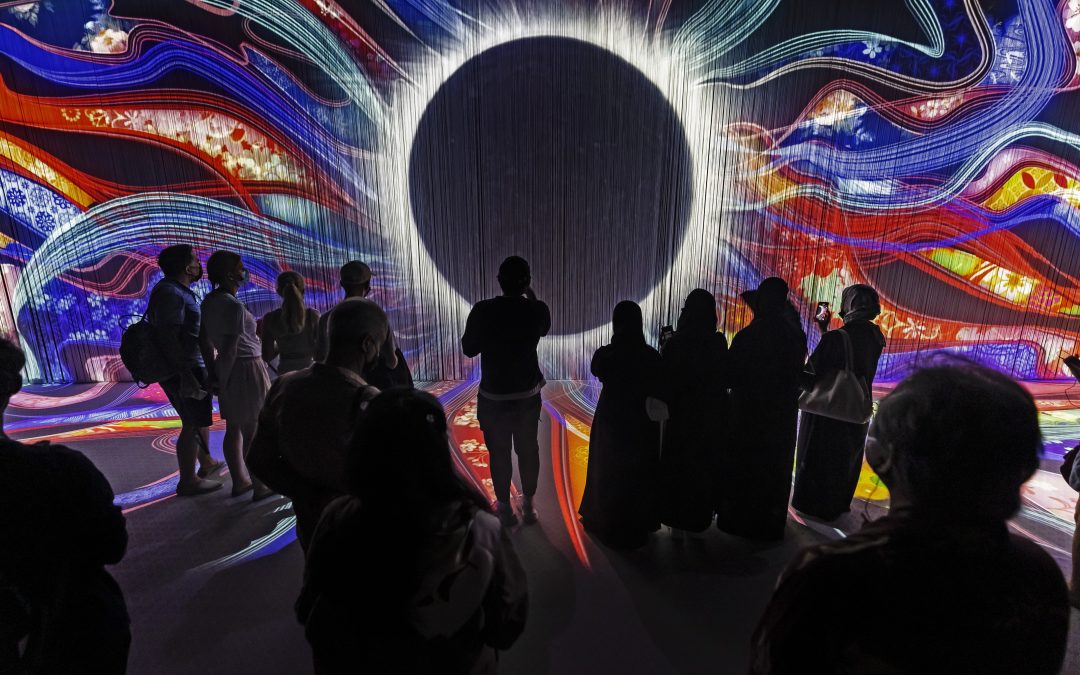Spatial experiences technology has the potential to transform the way we experience physical spaces. This technology enables brands and designers to create immersive and interactive experiences that engage customers and visitors in a unique and memorable way. In this article, we’ll explore how spatial experiences technology is used to create brand identities and enhance experiential design.
The Power of Spatial Experiences Technology
Spatial experiences technology, which includes augmented reality (AR), virtual reality (VR), mixed reality (MR), and other immersive technologies, offers new ways of engaging with physical spaces. By creating 3D environments that can be explored and interacted with, this technology creates a more immersive and memorable experience than traditional design methods.
For example, Japan’s Expo 2020 pavilion, “The Crosspoint,” used MR technology to create an interactive and educational experience that showcased the country’s technological innovations. Visitors could use a handheld device to explore different areas of the pavilion and learn about Japan’s contributions to various industries.
Spatial Experiences and Experiential Design
Spatial experiences technology also has the potential to transform experiential design. By incorporating this technology into exhibit and event design, designers can create engaging and interactive experiences that leave a lasting impression on visitors.
New Zealand’s Expo 2020 pavilion, “Te Whakakitenga,” used VR technology to take visitors on a journey through the country’s natural landscapes. This immersive experience created a sense of connection and wonder that aligned with New Zealand’s brand identity as a country that values sustainability and environmental stewardship.
Spatial Experiences and Brand Identity
Spatial experiences technology can also be used to create unique brand identities. By designing immersive experiences that align with a brand’s values and messaging, brands can differentiate themselves from their competitors and create a more memorable impression on customers and visitors.
For example, the UAE’s Expo 2020 pavilion, “The Opportunity Pavilion,” used AR technology to create an interactive experience that highlighted the country’s commitment to sustainability and innovation. By doing so, the pavilion created an emotional connection with visitors and positioned the UAE as a leader in these areas.
Successful Examples of Spatial Experiences Technology
Many companies and organizations are already using spatial experiences technology to create engaging experiences for their customers and visitors. In addition to the expo pavilions mentioned above, other examples include:
The “Flight of the Dragon” ride at Universal Studios in Beijing, which uses VR technology to take visitors on an immersive journey through Chinese mythology.
The “Magic Planet” exhibit at the Science Museum in London, which uses AR technology to create an interactive experience that teaches visitors about the solar system.
FAQs about Spatial Experiences Technology and Experiential Design
Q: What are some of the challenges of using spatial experiences technology in design?
A: One of the main challenges is ensuring that the technology is integrated seamlessly into the design and does not detract from the overall experience. It is also important to consider accessibility and ensure that all visitors can participate in the experience.
Q: How can spatial experiences technology be used to enhance educational experiences?
A: By creating interactive and immersive experiences, spatial experiences technology can help to engage students and make learning more fun and memorable.
Q: What are some emerging trends in spatial experiences technology?
A: One emerging trend is the use of haptic technology, which allows users to feel and touch virtual objects. Another trend is the use of spatial audio, which creates a more immersive and realistic audio experience.
Conclusion
Brands worldwide have begun to realize and leverage the power of immersive technology in their brand awareness journey. In an increasingly experience-driven economy, spatial experiences create purposefully built, multi-sensorial interactions within any physical space, and as technology evolves, it becomes more effective in altering perceptions and creating sensory-rich realities.

